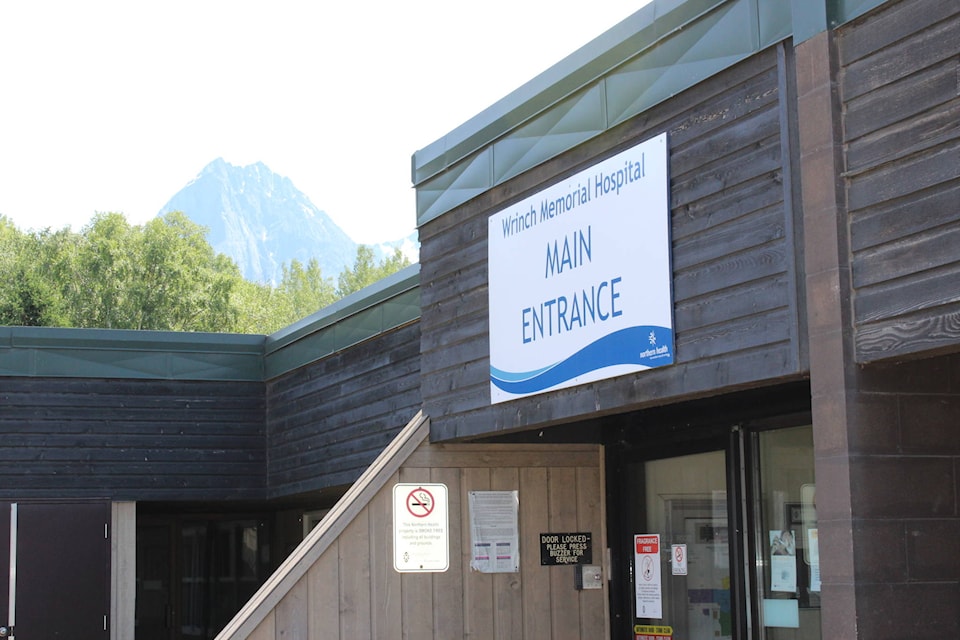Wrinch Memorial Hospital in Hazelton had the second highest occupancy rates in the Province last year at 120 per cent capacity.
However, Health Services Administrator Jim Aldrich said the statistics can be a bit misleading.
“We have ten acute care beds,” he said. “So if you are one person over, you are 110 per cent over capacity… as opposed to Prince George with ... 100 beds or whatever, it is like comparing apples with oranges.”
He added with that being said they need to solve those capacity issues.
“It is always a concern when we are over capacity, it is a strain on the system, it is hard on the staff,” he said. “It is something that needs to be solved. But remember, here it is one or two people. It isn’t like we have a whole ward of people that are extra.”
Aldrich said the hospital has ways to make things work when they are operating at full capacity.
“You can’t plan for everything,” he said. “Ultimately, when someone gets into an emergency department, it rests upon the physician which level of care the person needs. The primary importance is that patients’ safety and well-being. If we are full, they have a decision to make, who in the hospital can be discharged or maybe there’s another hospital that person can go to or maybe we can bring in more staff to work in an overflow room.”
He added the shuffle that takes place isn’t always easy.
“If a person needs to be discharged, they should be discharged. [But] it can happen where there is a delay in a person going home for whatever reason. Sometimes, the family isn’t ready to take that person home or maybe some equipment needs to be put in place first or maybe home support needs to go in first. It is a very complex issue. There are lot of dynamics out there in the community.”
Aldrich said things are being done now to try to solve the problem, including introducing a 24-hour presence in the long term care facility which frees up LPNs and RNs and they are working on partnering with First Nations to improve the ability to provide care in the community with a focus on palliative care at a home.
He said another way they are looking at fixing capacity issues is to recruit more staff, which he admitted is challenging in a place like Hazelton.
“We’ve added a $10,000 signing bonus to bring more staff in and that seems to be successful. We are hiring people. We had a position that was part time and it was vacant for a long time and we increased it to full time, which is more appealing to people. We are revamping our whole surgical department and hopefully training new positions there. We purchased brand new surgical equipment, we’ve invested about $300,000 into that and that attracts physicians and surgeons more. It is a lot of work, there is some catch up happening but the future is looking bright.”
He added management has been a lot more stable lately.
“The normal positions that you a see a lot of turnover in are acute care manager, community manager and health services administrator but that is all stable now.”
Aldrich added Wrinch Memorial is a unique hospital with a lot of opportunities to grow.
“Wrinch is unique in that we are one- stop shopping. We have our medical clinic with ten doctors, we have long term care beds on site, ten acute beds, across the way we have assisted living, community health services are on site. We are blessed in that we have a lot of synergy and we are mostly co-located. It gives us a lot of opportunity and a lot of capacity to build things even better.”
Despite the recent statistics, Aldrich is optimistic about the future of the hospital.
“I’m encouraged. We have an awesome physician team that are very engaged and very proactive. If you want to improve capacity issues, everyone has to be working closely together and engaging each other and that is happening at Wrinch.”
Aldrich also wants to remind people that the hospital is still open for business.
“If you need the emergency department, you need to come. But think, if you stub you toe, emergencies are for emergencies, if it’s something that can wait you can call the doctor. It does decrease our ability for flow-through if a person isn’t using the emergency department properly.
“But let me make it clear, don’t hesitate to come, we aren’t shutting the doors down.”
Overall, B.C.’s hospital system operated over capacity again in 2018-19.
Figures obtained by The Interior News for the last fiscal year show that across all of British Columbia, more days were logged in acute care wards than were budgeted for by provincial health authorities.
That means that thousands of patients spent time in acute care spaces not budgeted and designated for such use.
A 2015 report for Fraser Health warned that “maintaining high hospital occupancy (over 95 per cent) is associated with longer lengths of stay and higher risk for errors and adverse events.”
Nevertheless, the provincial hospital system has operated above 100 per cent for the last five years. Last year, the province-wide occupancy rate was 103.2 per cent, up from 102.7 per cent each of the two previous years.
The Northern Health Authority was the most crowded in the province, operating at 113 per cent capacity. The region’s largest hospital, the University Hospital of Northern British Columbia, was the third most-crowded large facility in the province with a 116 per cent operating rate.
—with files from Tyler Olsen
